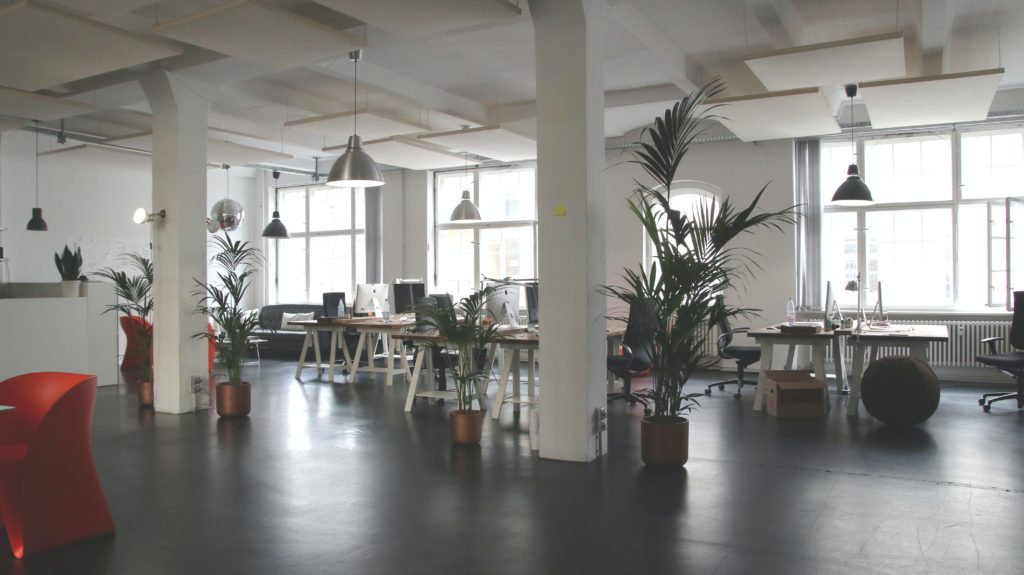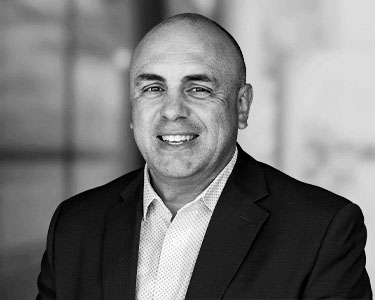In the wake of the coronavirus pandemic, the air quality of your commercial building has never been more important. If you’re looking for ways to provide a safer, cleaner environment in your commercial building, you’ve likely come across a few different methods. One of the most common air treatment methods is HVAC UV-C air treatment, but its greatest competition is shielded in-ceiling UV-C (also known as ceiling mounted or active upper room UV-C) air treatment. Let’s take a look at both air treatment methods, how they differ, and which option may be best for your facility.
UV-C Air Treatment: HVAC UV Light vs. Shielded Ceiling-Mounted UV-C
HVAC systems are located on the outside of buildings and the UV-C lamps are installed inside the system, while shielded in-ceiling UV-C air treatment is located in indoor rooms, where people bring contamination inside. The UV-C light treats pathogens, bacteria, viruses, and fungus.
In an HVAC system, a UV-C lamp is placed within the HVAC system’s internal components, typically near the cooling coil. Here, the UV-C neutralizes pathogens brought in from fresh, outdoor air, or recirculated air from the building, before it is mixed and circulated back into the building.
In a ceiling-mounted UV-C air treatment system, the air is treated at the room level, wherever a unit is installed. Treating the room air acts to control the source of pathogen generation, i.e. people. Effective in-ceiling air treatment systems make use of shielded, in-ceiling UV-C units that actively draw in and neutralize pathogens at their source.
HVAC UV-C vs. In-Ceiling UV-C Treatment: The Pros and Cons of Each
The biggest difference between the two air treatment methods is clear, but which method is better? It’s important to first assess your commercial building’s requirements, and then look at the pros and cons of both methods. Here’s a breakdown of the most important considerations for both treatment methods.
HVAC UV-C Air Treatment
Pros:
- Treats outside air before it enters the rest of the building. HVAC air treatment systems were primarily designed to treat outside air. Their original purpose was to help remove any allergens and contaminants before air begins circulating throughout the building. It is also designed to reduce or dilute indoor air pollutants.
- Keeps the HVAC system clean. UV-C light treatment components in an HVAC system are located near the integral parts of the HVAC system. That means the UV-C lamp is able to neutralize any mold or contaminants that may be forming on the mechanical components of the HVAC system itself. The cooling coil in particular can present problems if it’s not well-maintained. An HVAC UV-C air treatment system can help mitigate these problems, ensuring you’re not introducing contaminated air into your building and reducing required maintenance on the system.
Cons:
- Cannot treat effectively at room level. UV-C light treatment is installed in HVAC systems to ensure that coils are kept clean and free of mold. Air passes so quickly over the UV lamp that the dosage required for effective elimination rate is not strong enough to meet room level requirements typically desired. People are the source of contamination, so using room-level treatment is beneficial to removing room-level contamination.
- Does not control pathogens and contaminants brought in by people. People are the number one source of contamination in any building. Because HVAC air treatment systems cannot ensure rooms are all treated the same, due to hundreds of feet of distribution systems, ducts, and complicated automation, air may not be effectively treated at the room level. There is limited peer-reviewed information regarding microbiological treatment at the room level.
Pros and Cons of Ceiling Mounted UV-C Air Treatment
Pros:
- Actively neutralizes pathogens. Ceiling-mounted UV-C air treatment systems are designed to actively draw in and neutralize pathogens in the room where the pathogens are generated. These systems are built with a series of fans that pull air and any airborne pathogen into the system, where it can be treated. Active neutralization helps to ensure a cleaner, safer environment.
- Controls pathogens at the room level. Because shielded in-ceiling air treatment systems are separate from the HVAC system, they are able to control pathogens in any room, office, or area of your building where they are installed, providing room-level control that an HVAC UV-C system cannot. This allows for focus treatment in problem areas or areas where people gather and share air space.
- Provides complete, effective building coverage. In-ceiling UV-C air treatment systems are installed in a way that covers almost any space in your building. Every square inch of your office, room, or even complete building, can be successfully and effectively covered by this comprehensive air treatment method.
- Provides continuous treatment. An in-ceiling UV-C air treatment method actively draws in and treats pathogens directly near the room occupant, rather than hundreds of feet of ductwork away. These in-ceiling UV-C air treatment systems ensure continuous treatment is delivered directly at the room level, providing a cleaner environment exactly where it is needed most.
Cons:
- Requires more units. While an in-ceiling air treatment system can deliver on-the-spot, room level treatment, it typically requires more units than a single source UV-C bulb in the HVAC system, which makes use of one UV-C light. That said, a greater presence of UV-C air treatment units can contribute to much more effective reduction of pathogens.
HVAC vs. In-Ceiling UV-C Air Treatment: Which Option Is Best For My Building?
After looking at the pros and cons, you may still be wondering which option is best for your building. If you’re looking to provide your building with cleaner, safer air, both of these systems are useful, but an in-ceiling UV-C air treatment system is best suited to room level air treatment. While an HVAC air treatment system can help reduce allergens and contaminants from outside and recirculated air, it is not as effective at the room level.
Shielded in-ceiling UV-C air treatment is an active upper room air treatment system that can provide continuous, 24/7 treatment, improving air quality at the room level where it is needed most. When you’re concerned with providing the safest environment possible for your employees and visitors, an in-ceiling UV-C air treatment system is the better option.
If you’re interested in learning more about in-ceiling UV-C air treatment or the research behind it, the UV Angel team is here to help. Contact us today for more information.



 Paul Byrne
Paul Byrne Bryson Despain
Bryson Despain Yingying Haung, MD – Ph.D.
Yingying Haung, MD – Ph.D. Tom Byrne
Tom Byrne Dave Baarman
Dave Baarman Bret Lewis
Bret Lewis Dr. Linda Lee, MBA, CIC
Dr. Linda Lee, MBA, CIC Ted Cole
Ted Cole
 Bob Rothstein, MD
Bob Rothstein, MD Jacqueline Schultz, RN, MSN CNAA
Jacqueline Schultz, RN, MSN CNAA Dr. Jeffrey A. Gelfand, MD
Dr. Jeffrey A. Gelfand, MD Tianhong Dai, Ph.D.
Tianhong Dai, Ph.D. Andrew Gostine, MD
Andrew Gostine, MD